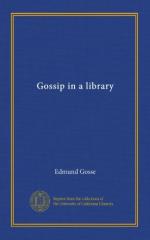Ferrers well comprehended the taste of his age when he conceived the notion of a series of poems, in which famous kings and nobles should describe in their own persons the frailty and instability of worldly prosperity, even in those whom Fortune seems most highly to favour. One of the most popular books of the preceding century had been Lydgate’s version of Boccaccio’s poems on the calamities of illustrious men, a vast monody in nine books, all harping on that single chord of the universal mutability of fortune. Lydgate’s Fall of Princes had, by the time that Mary ascended the throne, existed in popular esteem for a hundred years. Its language and versification were now so antiquated as to be obsolete; it was time that princes should fall to a more modern measure.
The first edition of Baldwin and Ferrers’ book went to press early in 1555, but of this edition only one or two fragments exist. It was “hindered by the Lord Chancellor that then was,” Stephen Gardiner, and was entirely suppressed. The leaf in the British Museum is closely printed in double columns, and suggests that Baldwin and Ferrers meant to make a huge volume of it. The death of Mary removed the embargo, and before Elizabeth had been Queen for many months, the second (or genuine first) edition of the Myrroure for Magistrates made its appearance, a thin quarto, charmingly printed in two kinds of type. This contained twenty lives—Haslewood, the only critic who has described this edition, says nineteen, but he overlooked Ferrers’ tale of “Humphrey, Duke of Gloucester”—and was the work, so Baldwin tells us, of seven persons besides himself.
The first story in the book, a story which finally appears at p. 276 of the edition before us, recounts the “Fall of Robert Tresilian, Chief Justice of England, and other of his fellows, for misconstruing the laws and expounding them to serve the Prince’s affections, Anno 1388.” The manner in which this story is presented is a good example of the mode adopted throughout the miscellany. The corrupt judge and his fellow-lawyers appear, as in a mirror, or like personages behind the illuminated sheet at the “Chat Noir,” and lamentably recount their woes in chorus. The story of Tresilian was written by Ferrers, but the persons who speak it address his companion:
Baldwin, we beseech thee with our names to begin
—which support Baldwin’s claim to be looked upon as the editor of the whole book. It is very dreary doggerel, it must be confessed, but no worse than most of the poetry indited in England at that uninspired moment in the national history. A short example—a flower culled from any of these promiscuous thickets—will suffice to give a general notion of the garden. Here is part of the lament of “The Lord Clifford”:
Because my father Lord John Clifford
died,
Slain at St. Alban’s,
in his prince’s aid,
Against the Duke my heart for malice fired,
So that I could from wreck
no way be stayed,
But, to avenge my father’s
death, assayed
All means I might the Duke of York to
annoy,
And all his kin and friends for to destroy.




